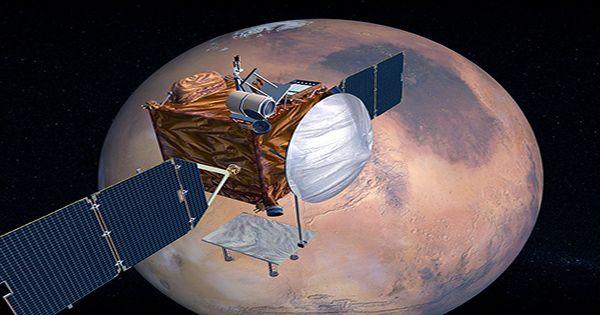Turns out that the missions to Venus are like buses, you wait year after year for a new pick and then three come together at once. The latest Veritas and DVNCI + Venus missions were selected by NASA last week, now the European Space Agency (ESA) has announced that it has selected NSV Venus Orbiter as the fifth middle-class mission in ESA’s Cosmic Vision Plan. Envision will follow ESA’s Venus Express steps to further expand our perception of our planet by studying both the planet’s atmosphere and its internal features.
Günther Hasinger, ESA Director of Science, said in a statement, “Our closest, yet otherwise different, neighbors in the solar system are waiting for a new era in our exploration.” “Together with the recently announced NASA-led Venus missions, we will have a very comprehensive science program on this mysterious planet for the next decade.”
The next step is the “definition phase” where the design and instrumentation of the orbiter will be finalized. The first launch opportunity is 2031, a 15-month cruising time and a 16-month orbital circulation that will place the orbiter in a semi-polar orbit.
It will work closely with NASA’s discovery missions to provide important insights into how Venus is; For example, how do you get an Earth-sized planet with crushing pressure, hellish temperatures and acid clouds? To understand more about Venus is not only to provide insight into whether geologically active, sustainable oceans at once, or even life could be managed, if it goes to a catastrophic greenhouse effect, it probably gives a glimpse into the future of Earth.
“We are thrilled to contribute to ESA’s exciting new mission to investigate Venus,” said Thomas Jurbuchen, NASA’s Associate Administrator for Science. There will be a strong and coordinated set of new data to understand how the surface and atmosphere have changed over time.” The invasion is expected to end in low-Venus orbit between 220 and 540 kilometers (137 and 335 miles) from the planet.
It will take the spacecraft around Venus in just 92 minutes. Currently, the Japanese space agency Akashsuki has only one mission studying Venus, which has been studying the Venetian atmosphere since 2015. “A combination of European and American expertise in Venus science and technology, the collaboration has benefited the imagination from collaboration with NASA,” Hassinger said. “Imagination reinforces Europe’s role in scientific research of the solar system. Our growing mission fleet will give us and future generations the best insight into how things work around our planet, especially relevant in an era where we are discovering more unique explanate systems.”














